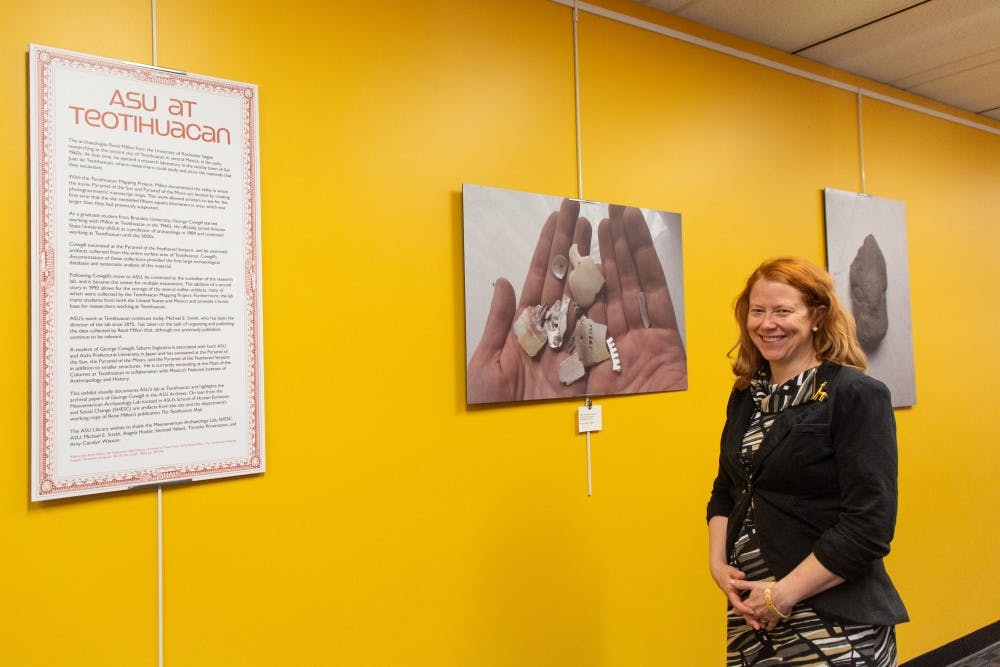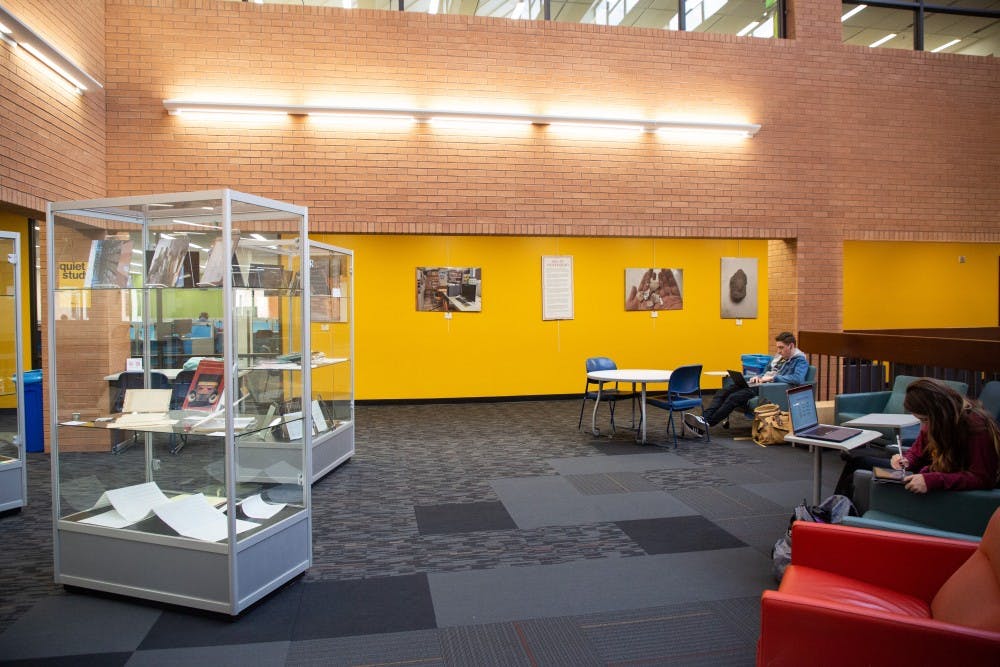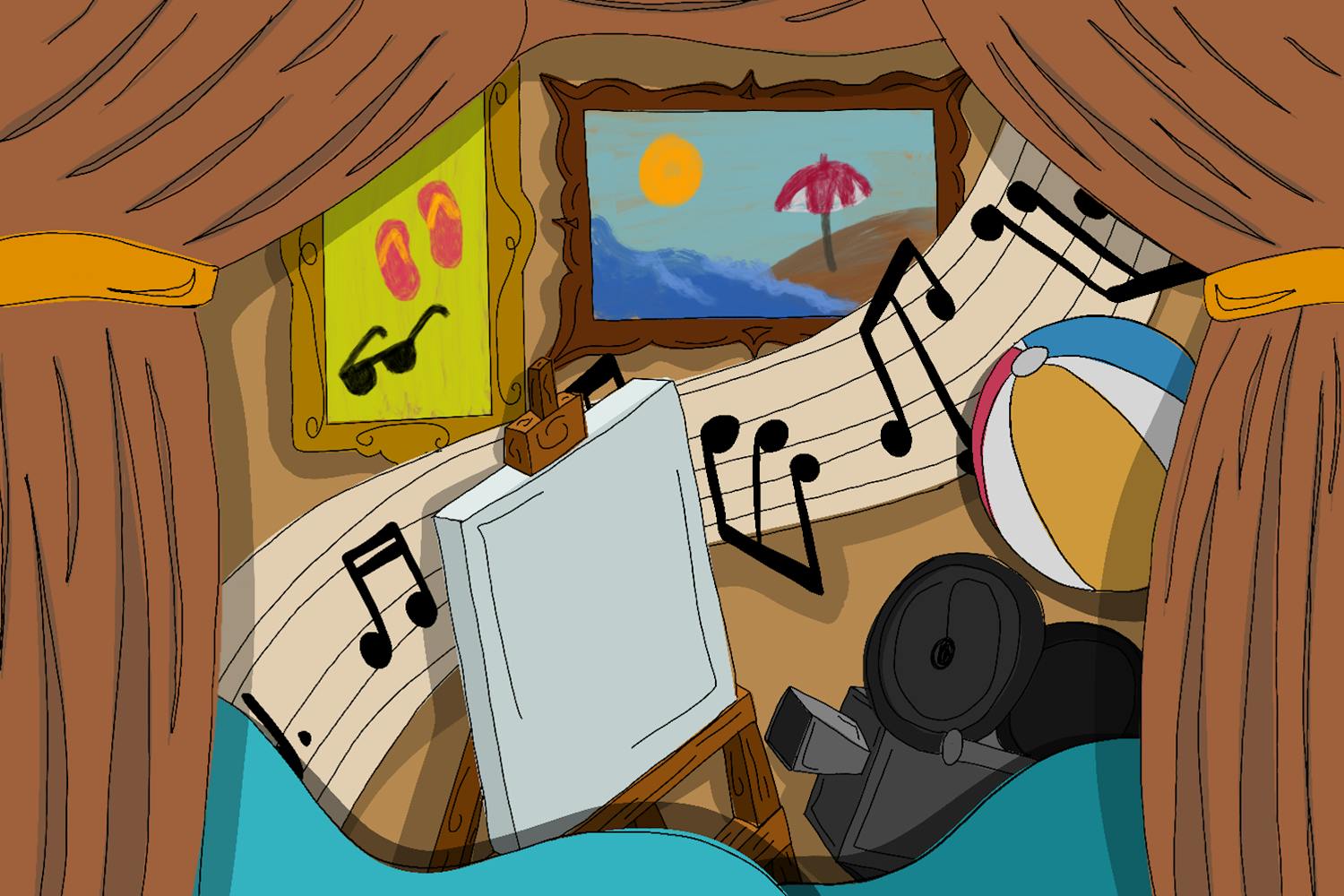On the second-floor balcony of Noble Library – among artifacts, photographs, maps and charts – students can find a floppy disk sitting in a glass case.
While the type of storage device may be obsolete, the information it holds is part of an ongoing study at the Teotihuacan Mapping Project, a research effort working to transfer data about the ancient Mexican city once home to 100,000 people.
Michael E. Smith, a professor in the School of Human Evolution and Social Change and director of the Teotihuacan Research Lab that hosts the project, said the research remains relevant today in uncovering how life was like at the time.
“We can learn about the site as an urban center, as a place that had a population of 100,000 people, about the lives of people there," Smith said. "What was life like? What was society like? And the artifacts we have tell us quite a bit about that.”
The mapping project is just one of a handful of research efforts whose findings are on display in the ASU at Teotihuacan exhibit.
The exhibit, which is located in Noble Library until Jan. 30, is an exhibit aiming to honor decades of ASU's work at Teotihuacan, while raising awareness to students that they have access to an incredible amount of information through the University.
A closing reception for the exhibit will be held on Jan. 22, from 3:30 p.m. to 4:30 p.m., and is free and open to the public.
The collection showcases the significant amount of information that has come out of the ASU lab at Teotihuacan over the years, said Seonaid Valiant, the curator for Latin American Studies at the ASU Library,
The exhibit also highlights the importance of archaeology in creating primary materials for students to study, Valiant said, who organized the collection of photographs, artifacts and data sheets seen in the exhibit.
“What I hope ASU students will take away from this is the knowledge that they can go into archival records here at this school on this campus and see people’s thought processes and see how their ideas changed over time," she said.
Other universities have participated in projects at the Teotihuacan Research Laboratory, but ASU is currently the only school permitted to manage the lab, giving the school a bigger role in uncovering information about the ancient city. The University allows other schools to participate in research alongside them.
The Teotihuacan Mapping Project began in the 1960s with late anthropologists Rene Millon and George Cowgill, co-directors of the lab.
The lab was developed to pursue Millon’s goal of creating the first complete map of Teotihuacan, among other studies.
Now the lab is managed by ASU, and a number of other ASU researchers have joined the project, including Smith.
While partaking in a variety of research projects at Teotihuacan, the continuation of Millon and Cowgill’s mapping project has been a key task for Smith, he said.
“There’s a lot to do to finish up the work they started,” Smith said.
Angela Huster, a postdoctoral research associate in the School of Human Evolution and Social Change, has been studying Teotihuacan alongside Smith for two years. She said a large part of finishing up this work has involved processing and organizing the vast collection of data that the lab already collected over the years to make it more accessible.
“My work has been going through making sure everything is in a modern data format, clearing up minor issues,” Huster said.
Huster’s role in the data preservation side of the project is crucial to the future of research at Teotihuacan.
“The data from any well-collected, well-documented project can be used to answer hundreds of questions that the original investigators either never thought of or never had time to get to," Huster said. "So that’s our goal for the Teotihuacan Mapping Project – that people will continue to find new questions and new ways of using the information."
Smith and Huster have partnered with the Digital Archaeological Record, tDAR, which is an online repository for digital records and provides a long-term data storage solution for the large datasets gathered by the Teotihuacan projects.
Francis P. McManamon, the executive director of the Center for Digital Antiquity and research professor in the School of Human Evolution and Social Change, provides assistance in the process of formatting and organizing the digital files in tDAR.
“The idea is that that’s how people will access the information – it will be in tDAR," McManamon said. "We have a website and people can do searches on the website if they know it exists, or people may just do a Google search for Teotihuacan ... They could very well get information that’s in tDAR."
While data from Teotihuacan research will continue to be updated and transferred into the digital record, a great amount of information is already there, available to those who are interested.
Reach the reporter at mswhitey@asu.edu or follow @MarissaWhitey on Twitter.
Like The State Press on Facebook and follow @statepress on Twitter.





